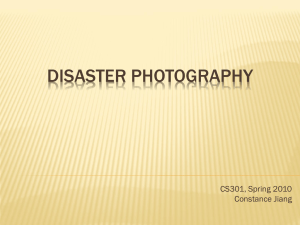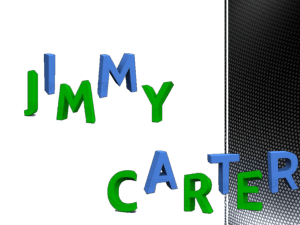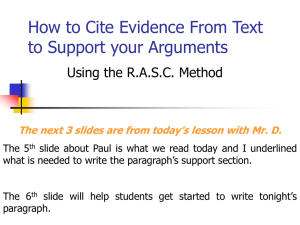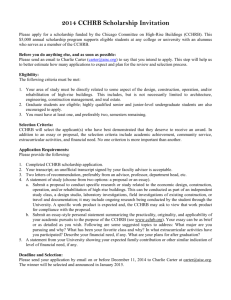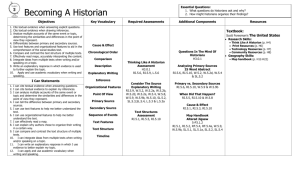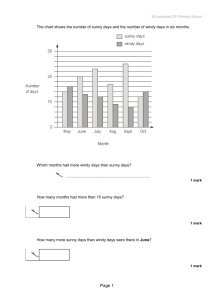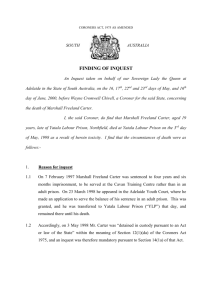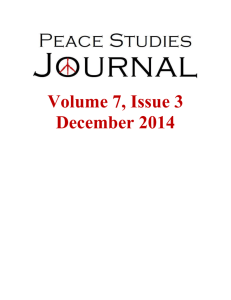Rose Carter Scenario
advertisement
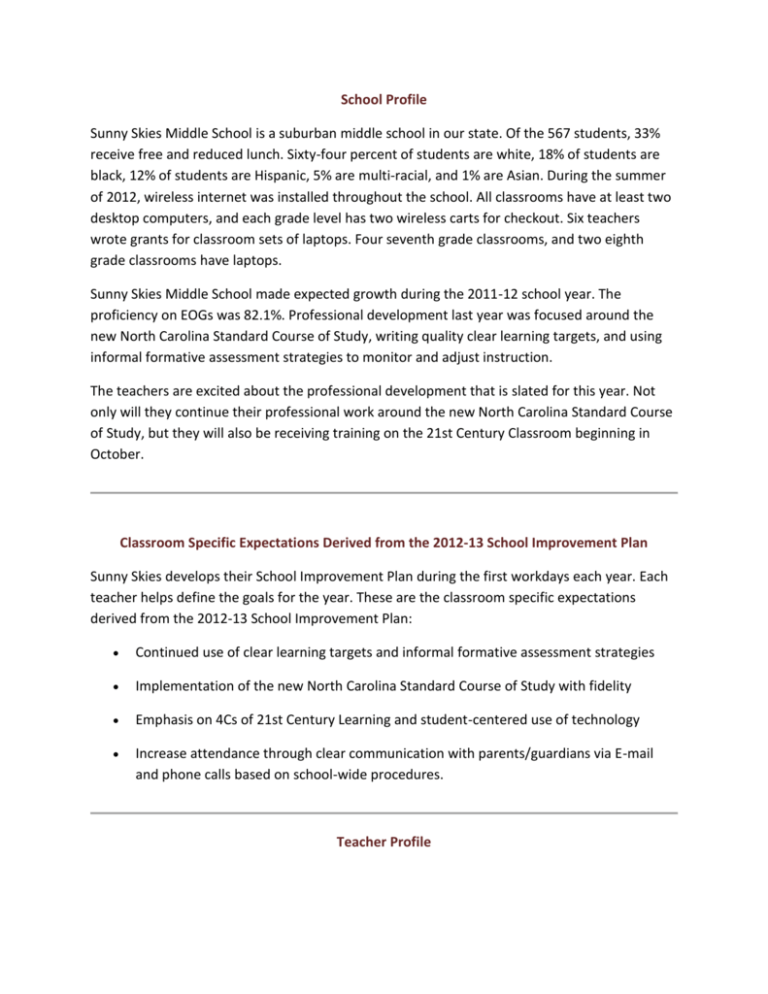
School Profile Sunny Skies Middle School is a suburban middle school in our state. Of the 567 students, 33% receive free and reduced lunch. Sixty-four percent of students are white, 18% of students are black, 12% of students are Hispanic, 5% are multi-racial, and 1% are Asian. During the summer of 2012, wireless internet was installed throughout the school. All classrooms have at least two desktop computers, and each grade level has two wireless carts for checkout. Six teachers wrote grants for classroom sets of laptops. Four seventh grade classrooms, and two eighth grade classrooms have laptops. Sunny Skies Middle School made expected growth during the 2011-12 school year. The proficiency on EOGs was 82.1%. Professional development last year was focused around the new North Carolina Standard Course of Study, writing quality clear learning targets, and using informal formative assessment strategies to monitor and adjust instruction. The teachers are excited about the professional development that is slated for this year. Not only will they continue their professional work around the new North Carolina Standard Course of Study, but they will also be receiving training on the 21st Century Classroom beginning in October. Classroom Specific Expectations Derived from the 2012-13 School Improvement Plan Sunny Skies develops their School Improvement Plan during the first workdays each year. Each teacher helps define the goals for the year. These are the classroom specific expectations derived from the 2012-13 School Improvement Plan: Continued use of clear learning targets and informal formative assessment strategies Implementation of the new North Carolina Standard Course of Study with fidelity Emphasis on 4Cs of 21st Century Learning and student-centered use of technology Increase attendance through clear communication with parents/guardians via E-mail and phone calls based on school-wide procedures. Teacher Profile Rose Carter has been teaching 7th grade for 8 years at Sunny Skies. Her entire teaching experience has been in 7th grade at this school. She recently completed her master’s degree in middle grades literacy. Ms. Carter is well-liked and well-respected among both teachers and students. She is considered to be one of the most tech-savvy teachers on staff, and many teachers call on her for help with troubleshooting technology problems. She has her own set of laptops that she received from writing a grant with five other teachers at Sunny Skies. When asked by the outgoing principal, she provided two sessions of optional professional development on using technology in the classroom. She uses a classroom webpage to facilitate instruction daily and to keep students and parents informed. She is the volleyball coach, organizes the Fall Festival, and is the Teacher-Sponsor of the Battle of the Books team. Ms. Carter is on the abbreviated instrument for the 2012-13 school year. Last year was her cycle renewal year. She was not rated developing in any category by her previous administrator. Class Profile Ms. Carter’s third period Language Arts class has 27 students. This class has eight students who are identified as academically/intellectually gifted, six students who are identified as exceptional children in the area of reading comprehension, and two students identified as having ADHD. Eighteen of the students in the class are white, seven are black, and two are Hispanic. There are 16 boys and 11 girls in this class. The class is organized in learning groups of three. Large flat-topped desks are pushed together into what Ms. Carter calls “learning pods.” Students in each pod work together for one unit. New pods are developed for each unit of study. With the new curriculum, Ms. Carter will teach five units over the course of the year, thus, students will have opportunities to work in five different pods. Professional Development Plan School Year: 2012-2012 Year: Lateral Entry: Name: Rose Carter Position/Subject Area: Mentor: 1 1 2 2 3 Career Status X 3 7th Grade Language Arts Position/Subject Area: 4 School: Sunny Skies Middle School School: (Required in the first three years for all beginning teachers) A. NC Professional Teaching Standards 1. 2. 3. 4. 5. Standard(s) to be addressed: Teachers Demonstrate Leadership Teachers Establish a Respectful Environment for a Diverse Population of Students Teachers Know the Content They Teach Teachers Facilitate Learning for Their Students Teachers Reflect on Their Practice 4. Teachers Facilitate Learning for Their Students 5. Teachers Reflect on Their Practice Elements(s) to be addressed: 4e. Teachers help students develop critical thinking and problem-solving skills. 5a. Teachers analyze student learning. B. Teacher’s Strategies Expected Outcomes and Goals for Elements Activities/Actions Resources Needed Evidence of Completion Timeline Goal 1: To plan and facilitate Problem Based Learning lessons that engage students in critical thinking and problem solving skills as measured by lesson plans and culminating projects. Goal 2: To compile and use individual student data on a bi-monthly basis to make informed instructional and assessment decisions as measured by documented lessons and assessments, flexible groupings, and data to inform instructional practice. Initial Thoughts/Notes: 1. 2. Attend a PBL workshop offered at the Professional Development Center. Work collaboratively with team to build integrated units that can be problem based. 3. Build Rubrics for Projects 1. Attend a data retreat offered by LEA. 2. Use information from NC Falcon to create formative and summative assessments to guide lesson planning. Students increased ability to frame, analyze and solve problems. Culminating project of Learning that evidences critical thinking and problem solving. PD Days May 2013 PBL format for lesson development LEA approved rubric School and student data Improved lessons that are aligned and differentiated. Growth on the EOG tests. May 2013 Lesson Plan: Ms. Carter provided the following lesson plan prior to the evaluation. Common Core State Standards Aligned to the Lesson RI.7.1. Cite several pieces of textual evidence to support analysis of what the text says explicitly as well as inferences drawn from the text. RI.7.2. Determine two or more central ideas in a text and analyze their development over the course of the text; provide an objective summary of the text. RI.7.6. Determine an author’s point of view or purpose in a text and analyze how the author distinguishes his or her position from that of others. RL.7.1 Cite several pieces of textual evidence to support analysis of what the text says explicitly as well as inferences drawn from the text. W.7.3. Write narratives to develop real or imagined experiences or events using effective technique, relevant descriptive details, and well-structured event sequences. Clear Learning Targets I can cite textual evidence to support my analysis of what the text says. I can cite textual evidence to support my analysis of inferences I draw from the text. I can write a well-structured narrative. I can contribute to both my pod and whole class discussions. Essential Questions What is prejudice? Who discriminates and why? Texts “The In Group” by Eve Shalen (nonfiction) Excerpt from Shakespeare’s Merchant of Venice - Act 3, scene 1, lines 58-68 W.7.5. With some guidance and support from peers and adults, develop and strengthen writing as needed by planning, revising, editing, rewriting, or trying a new approach, focusing on how well purpose and audience have been addressed. SL.7.1. Engage effectively in a range of collaborative discussions (one-on-one, in groups, and teacherled) with diverse partners on grade 7 topics, texts, and issues, building on others’ ideas and expressing their own clearly. Learning Plan: Ms. Carter Turned in the Following Learning Plan Three Days Prior to the Classroom Evaluation Visit This lesson occurs during week two of our 7th Grade Discrimination and Acceptance Unit. Today, students will be reading a non-fiction account of a girl’s experience with her classmates where she made the choice to join a group of peers to ridicule a girl in her class. Having been the victim of prejudice herself, she reflects on this choice in an honest and self-knowing manner. Students will use textual evidence to both infer and support their analysis of a text. Students will collaborate with peers to dig into a rigorous excerpt from Shakespeare’s Merchant of Venice. We will discuss the piece on a cold reading, then view actor Al Pacino as he plays the role of Shylock and recites this speech. We will discuss what makes the speech powerful. We will probably not finish this part of the lesson today. I expect to read it and have them work through a few questions. Over the course of the next week, students will then be provided with the assignment to brainstorm different individuals or groups who face discrimination. We will discuss the class list, and students will choose a topic they want to use to write their speeches on discrimination. They will work in collaborative groups to brainstorm some main points they want to make in their speeches. Eventually, they will list at least three places/sources where they might find relevant and accurate information about discrimination against certain individuals or groups. This will lead to our research. Students will access all lesson materials on the classroom wiki page of the day. (Please take a few moments to access the class wiki link above.) Initial Thoughts/Notes:
